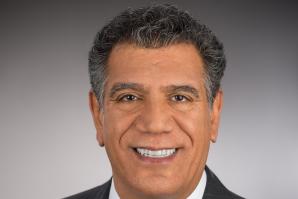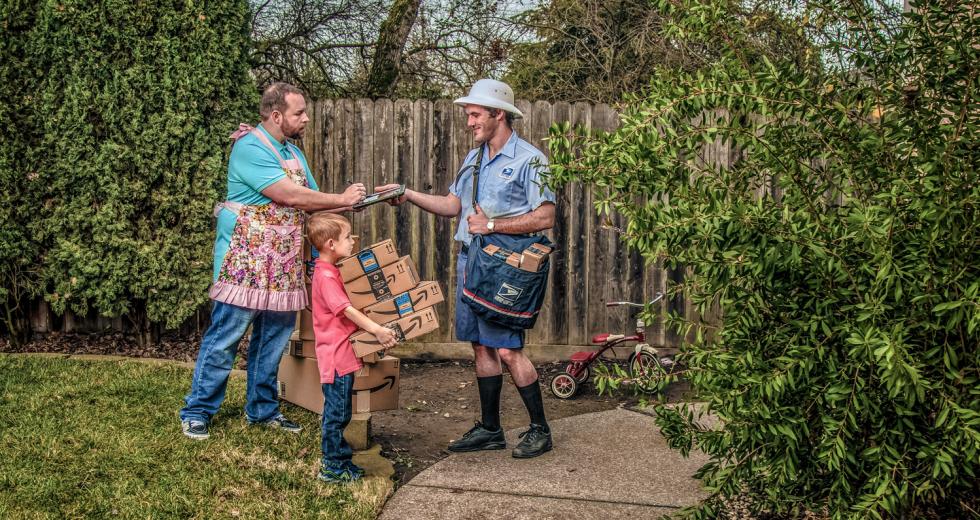Krista Bernasconi has spent almost her entire life living in Roseville — aside from the time she spent in the Navy, based at Naval Air Station Jacksonville in Florida and attached to a P-3 squadron that trained pilots.
“I was able to travel abroad and in the U.S.,” she says. “I loved my time serving, but also knew it wasn’t what I wanted to do for the rest of my life.”
Bernasconi returned to her hometown and eventually started her own public affairs and public relations business. But she still felt compelled to serve. Over the past decade, she has held positions on the Roseville City School District Board of Education and Roseville Planning Commission. She loves her suburban city — its nice parks and trails, family-friendly activities and low crime rate. A year ago, she even launched a clothing line of hats, hoodies and T-shirts with Roseville-themed designs. But now she’s being asked to rank what she likes most about what the city offers — and her opinion matters.
Related: Krista Bernasconi on challenges facing Roseville with dwindling sales tax revenue
Related: Rancho Cordova Puts Budget Dollars in the Community’s Hands
Bernasconi is one of 20 members (and eight alternates) of the Community Priorities Advisory Committee recently formed by the Roseville City Council to help determine which city services to cut back in order to prevent a projected $14 million budget deficit. Council members will take the committee’s rankings into account as they attempt to maintain a balanced budget for the 2018-19 fiscal year.
Doing so won’t be easy. The City’s costs are growing faster than revenues, and sales tax isn’t what it used to be in this regional shopping mecca. As Roseville attempts to solve this riddle, so do cities across the U.S. — especially those that developed around sales tax revenue generated by brick-and-mortar retail, only to see major shifts in the way modern consumers shop.
While overall spending is up in the U.S., the bulk of growth is occurring online. Nearly half of American households now have an Amazon Prime membership. Meanwhile, thousands of retail workers have lost their jobs as JCPenney, Sears, RadioShack, Kmart, Macy’s and other national retailers closed hundreds of stores in recent years. Who knows how many of the nation’s roughly 1,200 malls will survive the next decade? Additionally, as people choose services over products — a landscaper instead of a lawn mower, Uber rides instead of a car, a Netflix subscription instead of a DVD player — they eliminate another valuable source of local sales tax.
And cities like Roseville are feeling the sting.
BEACON FOR CONSUMERS
Roseville, with a population of roughly 132,000, has long shone as a gleaming beacon for consumers. Westfield Galleria offers a premier shopping destination — generating $500 million in sales annually — and is located across the street from the Fountains, which bills itself as a “unique collection of 40 stores and nine restaurants.” Roseville Automall and CarMax are packed on weekends with sales contracts being signed. Chain restaurants and big-box stores line Douglas Boulevard just off Interstate 80, providing easy access for out-of-towners. As the historic downtown undergoes an upgrade, it too has become an attractive spot for shopping.
“The sales tax issue affects every city. But it particularly affects Roseville because we’re a regional destination for shopping.”Rob Jensen, city manager, Roseville
All of this spending translates into money for the City’s general fund. Roseville’s annual taxable sales reach $5.4 billion, resulting in sales tax of $392 million — of which the City gets $54 million. Indeed, sales tax constitutes the No. 1 revenue source for Roseville’s $138 million general fund at 40 percent (the No. 2 source is property tax at 30 percent). For other cities, sales tax revenue might be closer to 15 percent, says Roseville City Manager Rob Jensen.
But there’s a problem: People don’t spend as much money in brick-and-mortar stores as they once did, and most of the shopping we do online isn’t locally taxed. “The sales tax issue affects every city,” Jensen says. “But it particularly affects Roseville because we’re a regional destination for shopping.”
Roseville is losing $3 million to $4 million annually in sales tax revenue to the internet. “We’re not in terrible shape,” says Roseville’s Chief Financial Officer Jay Panzica. “A couple million dollars a year, we can handle that.”
But the Great Recession forced the city to borrow from other funds to maintain the high quality-of-life services residents enjoy. Nearly a decade later, the borrowed money needs to be paid back. So, add in $10 million in long-term liabilities and deferred maintenance costs — not fixing roofs, replacing outdated equipment or buying new police cars — and the general fund has a $14 million structural deficit per year, Panzica says. That’s simply not sustainable.
WHAT TO CUT?
On two evenings each month between July 2017 and this spring, Roseville’s Community Priorities Advisory Committee gathers in a room at Martha Riley Library to listen to presentations and ask questions about the operations of five City departments: public works; fire; police; parks, recreation and libraries; and development services.
Discussions get down into the weeds, spanning a number of areas of service: library hours, swim lessons, SWAT teams, street maintenance and dozens of other services provided by the local government. Committee members propose each department rank a given activity as high, medium or low.
“Really, [the rankings] have all been challenging for different reasons,” says Bernasconi, who chairs the committee. “If public safety isn’t a priority in your city, then you’ve got nothing. That’s the basis and foundation. If you don’t feel safe, if the emergency response times are inadequate, if you have property crime, people will leave. But then you’ve got public works, and it’s really nice when they come and take my leaves.”
By engaging the public now, city officials hope to stave off frustrations and surprises down the road.
But all of these services cost taxpayers money. The fire and police departments constitute a combined 50 percent of general fund expenditures. Next is parks, recreation and libraries at $23 million, followed by development services at $9 million and public works at $7 million.
Maybe maintaining turf on City-owned soccer fields doesn’t seem important. But cutting turf maintenance from the budget would mean fewer soccer tournaments, which bring in additional revenue. Perhaps street paving can be scaled back. But what happens when old roads develop potholes and commuters are forced to drive over them to get to work?
“They have all been eye-opening presentations,” Bernasconi says. “Take the fire department: You think the fire department is about responding to a fire. But the fact is our department is running more medical calls than fire.”
At a fire department meeting last October, the committee peppered Fire Chief Rick Bartee with questions. They had done their homework, asking about the pros and cons of allowing fireworks on the Fourth of July, the average cost of running a fire truck to a call, and the possibility of resuming ambulance service once the contract with a private company expires.
Related: Can Downtown Roseville be Revitalized?
Infographic: Placer County Keeps on Growing
Related: Your former bedroom community isn’t just for sleeping anymore
“This idea that eventually our long-term obligations are going to start cutting into current services for current residents, everyone was thinking, ‘Oh that’s 2030 or 2035 or down the road,’” said committee member Marcus Lo Duca during the meeting. “It’s probably within the next three or four years where that is going to start having significant impacts.” He added that Roseville simply couldn’t maintain current levels of service while being fiscally responsible.
At another point during the discussion, committee member Tracy Mendonsa explained his reason for ranking a terrorism task force high on his priority list: the presence of the Union Pacific railroad and an FBI building. “The Department of Homeland Security was saying that the three soft targets that are going to be popular for terrorism for the next few years are railroads, ports and public transportation systems,” Mendonsa said. Yes, he acknowledged, the task force costs money, but “it’s nice to have that available. You don’t know when you’re going to need it. But when you do need it, time is of the essence.”
Bernasconi calls the meetings a “great study in how a municipality delivers its service.” They are also a deep evaluation of the role of government in our daily lives. “The beauty is we all have different perspectives, and we don’t all agree,” she says.
Consider how the City government picks up the majority of the tab for crossing guards for one local school district. At first glance, that might seem like a low priority, Bernasconi says. “But you think: Do you want to be the one who recommends not putting in a crossing guard?”
As committee members grapple with the ramifications of their rankings, the City is attempting to get even more residents and business owners involved in the conversation. The Engage Roseville campaign invites residents into the policy-making process. These stakeholders can partake in multiple channels of input and engagement, such as voting in online polls, watching coverage of the advisory committee meetings and attending a community dialogue meeting scheduled for Feb. 26.
This spring, the City Council will incorporate this feedback and its reflections about the values of Roseville residents and businesses when deciding what services to scale back on or possibly cut completely. By engaging the public now, city officials hope to stave off frustrations and surprises down the road.
Moving forward, Jensen says he expects to see more cities diving into discussions on declining sales tax revenue and other pressures on general fund budgets — and more efforts at transparency of government operations and education for taxpayers, as exemplified by Engage Roseville.
“It’s to keep the trust going forward,” Jensen says of the campaign. “I always say, it’s their money that we’re spending, so they have a right to be involved.”
Recommended For You

Back and Forward: Cyrus Abhar
City manager on Rancho Cordova’s rapid growth and development
Comstock’s chats with Cyrus Abhar, city manager of Rancho Cordova, about growth in the rapidly developing suburb.

Slumber Party
Your former bedroom community isn’t just for sleeping anymore
As California struggles to meet the rising housing demands and address the state’s policy to reduce greenhouse gas emissions, the Capital Region is positioned to look to the suburbs for answers. This means farewell to the bedroom communities and hello to vibrant communities on the outskirts of the urban core.




Comments
The fire department responding to medical calls for service when documentation factually demonstrates it is not necessary has been part of “budget speak” for over 40 years. Here we are in 2018 and the sacred cows who elect public officials continue the systematic support of fire trucks/staff responding to medical calls. Someone needs to have the spine to cut.
Jake...I have a few questions for you.
What documentation are you referring that "factually demonstrates" the fire service is not necessary to respond to medical calls?
What is your solution to respond to critical medical aids? Who, and a better question, how many should respond? A private ambulance gives you two personnel that cost insurance companies $2k+. That gives you 1 driver and 1 for patient care. Who does chest compressions? Who intubates and ventilates the patient? Who establishes an IV and gives appropriate doses of medication? Who manages the cardiac monitor and defibrilator? Who lifts the patient? Who caries the patient and multiple pieces of equipment around furniture, through tight spaces and down stairs? Who comforts and informs the frantic family members and loved ones on scene? Etc...etc...etc...
How long are you willing to wait for an ambulance to arrive to help with your medical emergency or someone you care about?
If the RPD wants more money, then the speeders on all the roads should provide a cash crop.
On Baseline and Junction every day all day long 45 speed limit, Typical speed 60+,
Not only speeding but unsafe lane changes, then the excess of noise blasting mufflers, and base noise loud enough to rattle the windows over a 7 ft cement block fence.
It’s ridiculous.
So if we as a community love Roseville so much like we all do. Why not get organizations together to help pick up the slack and give back on the price tag to reduce our debt to help get Roseville ahead so we don't let this great city fall giving back feels great to do helps us mingle with neighbors and become a stronger city than we already are. As we know Roseville was once a lot smaller and how Roseville has grown but yet you still know 1 in 4 people you see from some part of ur history living or growing up here in Roseville let's keep it that way and all come together and help by donating a little of our time to give back to Roseville since we all dearly love what Roseville has given us. So for instance cutting the soccer field what if we got a local church or boy scouts group or any one group to help a little and volunteer there time as they rotate through people for 1 year to help cut the grass and fertizile to keep it up to our standerds so we can keep our local games playing while having sales taxes rolling in and and one less bill to add to the general year deficit. I'm sure we can all donate a little of our time and we will get the perfect organization suitable to help maintain our city standerds so that we as a whole can reduce our general defict wich we have created from the luxurys we enjoy so much. We are the only ones who can help our city grow in a strong positive way to and to reduce debt or watch our city fall and fail due to our own self rigitious and neglect it's our city and our choice what to do. Do you choose to do right for our city or destroy the city?
Unless you look at exact expenditures , get down to every dollar is spent , not lumped into a category you can't know where to cut.